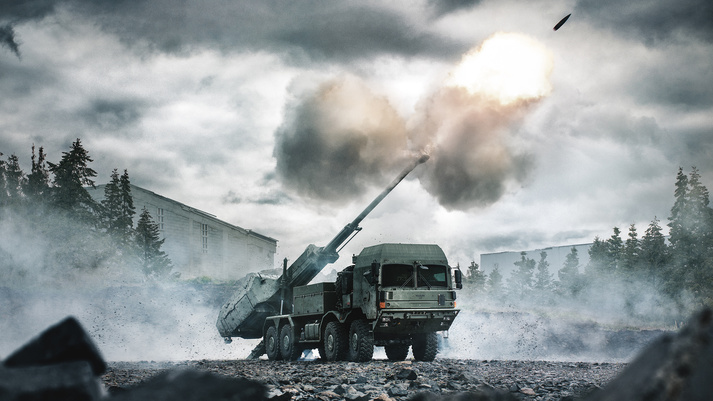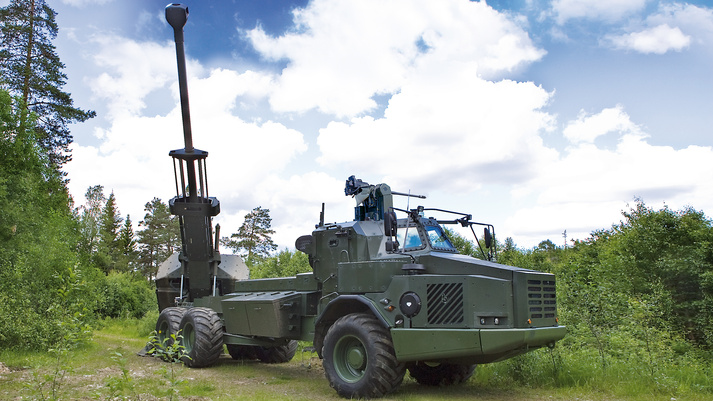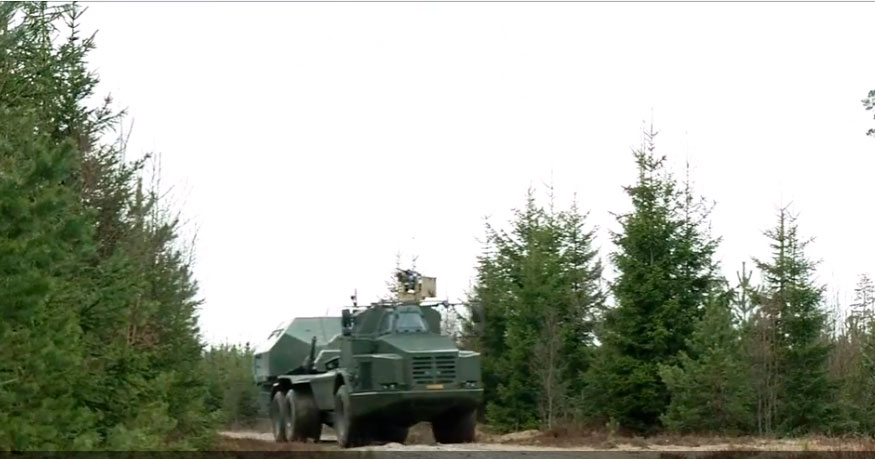Bae Systems ha presentado en Set 2019 la nueva versión del sistema de artillería Archer, un cañón calibre 155mm montado sobre plataforma terrestre a ruedas 8×8. En servicio en el Ejército Sueco desde 2015, la “Nueva versión modular” permite emplear diferentes tipos de chasis, además de mejoras operativas en el sistema de armas y la protección de la dotación. El producto se presenta en el momento en que muchas FFAA están modernizando sus sistemas de Artillería.
At the time, Mr. Take, who had been a project manager on the program for two years, helped bring to fruition a concept more than two decades in the making. He worked with the ARCHER team at the company’s location in Karlskoga, Sweden.
“I had promised when I joined the team that we would deliver the first production units by September 2015. And we held that promise – so that was a great moment,” he recalls. Now that moment has a new meaning, as ARCHER’s success has led to a new, even more advanced version that employs a modular design to make it more suitable for international markets.

Rolling out a new, modular ARCHER
BAE Systems unveiled the new modular ARCHER system to the international market in September 2019. The new version was mounted on a Rheinmetall RMMV HX2 8×8 truck, different from the Volvo A30 6X6 articulated hauler currently used by the Swedish Army. ARCHER’s international appeal is based on the modularity that allows it to adapt to a variety of vehicle chassis, meaning it can be more easily integrated into various militaries’ existing vehicle fleets while supporting commonality.
This capability comes at a time when a number of defence forces are moving to modernize their artillery. The international market can benefit from ARCHER’s superior mobility, deployment speed, and firepower – as well as crew protection. The fact that the system can be mounted on different carriers adds to the ARCHER’s versatility.
“Operating the ARCHER is very easy and requires little training time,” Take says. “And with this new modular version, forces around the world can gain from its capabilities while choosing the vehicle chassis they want to mount it on.”

A post-cold war capability
ARCHER was the culmination of a concept that originated during the waning days of the Cold War when Sweden was considering how to modernize the country’s artillery.
BAE Systems’ Weapon Systems business in Sweden – previously known as Bofors – had long been a trusted supplier of munitions and weapons to the Swedish military, dating back to the 1800s. The Bofors F77A had served as the backbone of Sweden’s artillery throughout the 1980s. However, studies looking at the future needs for indirect fire capabilities carried out toward the end of the decade identified some shortcomings, as defence needs were evolving.
In addition to the need for longer range and higher accuracy, there was a desire for higher mobility and fast deployment speeds to be effective on battlefields of the future. And following the end of the Cold War, cost and manpower considerations took on greater importance as the Swedish Armed Forces looked to realign in the absence of a Soviet threat.
Pursuing the concept
Throughout the early 1990s, the company explored different concepts that could help address the mobility, speed, and range limitations of conventional artillery systems. The goal was to develop a system that could deploy, fire, and move with minimal lead time.
While mounting the howitzer on a vehicle helped improve mobility, the team still needed to speed up deployment time. Inspiration came from company’s naval gun division, which had developed a modified F77 artillery system for Sweden’s maritime defence that featured an automatic loading mechanism.
“The big step was introducing a magazine that could handle the projectiles and charges automatically,” Take explains.
The ARCHER concept evolved during the early 2000s, and by 2008, Sweden placed an order for serial production that allowed the company to complete final development of the ARCHER system.
A technological evolution
Advances in computing and electronics allowed engineers to achieve a level of automation that wasn’t possible when the ARCHER concept was first born.
“We could take all the calculations normally carried out remotely and manually at a fire direction center and put them into the gun,” Take says. “Suddenly, the gun could operate more or less by itself. That was an important system-level innovation.”
ARCHER also benefits from the concurrent development and fielding of the Excalibur 155mm Precision Guided Extended Range Artillery Projectile, helping extend its range to 50km.
The ARCHER’s integrated systems enables smart munitions like Excalibur to be automatically programmed by the system’s operators with just a few clicks from the safety of the cabin.
“The combination of ARCHER’s features sets it apart from the competition,” Take says. “There are bits and pieces of ARCHER’s capabilities in other systems out there, but nobody has it all like the ARCHER does. Its rivals don’t have the full portfolio of capabilities.”
Ease of use and rapid deployment
ARCHER’s ability to be ready to fire in 20 seconds and be moving again within 20 seconds of firing its last round also puts the system in a class by itself. ARCHER has a standard crew size of three but can be operated by a single person if needed.
Whether it’s the version of the ARCHER developed for the Swedish Army, or the new one for potential international customers, ARCHER offers a unique capability when it comes to mobile firepower.
“It’s a user-friendly system and can help drive innovation and new force structures, and I think a number of countries are ready to seize the opportunity,” Take says.




